.jpg)
Organizations today face multiple challenges to maintaining the health and performance of employees while attempting to integrate new technologies and support a widening range of work styles.
As computing devices proliferate, organizations are simultaneously reducing the traditional planning footprint and offering a greater diversity of spaces for individual and group work—all while providing a safe and ergonomic working environment.
A review of recent ergonomics studies reveals surprising insights about new workers, new technology, and new furniture elements
1. Disturbing statistics about Generation Y’s vulnerability to ergonomic injury.
2. The greater potential for injury in organizations that increase the size and number of monitors used in primary workspaces.
3. The importance of ergonomic training and regular reminders to change posture in reducing injury.
4. The role that casual lounge furniture within social and collaborative spaces may play in permitting workers to naturally assume healthy postures when using electronic devices.
1. Office planners should assume that many Generation Y office workers are entering the workforce with existing injuries
Knoll has explored the nature of Generation Y and its effects on the workplace in other publications. The jury is still out on whether this generation, which spends an astounding 7.5 hours a day on electronic devices, is its predecessors. However, one thing is certain: the intensive use of electronic devices by members of Generation Y has broad consequences for their long-term health and for the organizations that employ them.
Studies indicate just how alarming those consequences can be: a cross-sectional study in 2000 indicated that 41% of university students experienced pain and discomfort symptoms while using a computer; by 2008, more than 50% of surveyed university students experienced pain they attributed to computer use.
The study shows that the potential exists for more than 2.5 million students to develop injuries to the upper body, arms and back (upper extremity musculoskeletal disorders) before they even enter the workforce.
Further, it’s plausible that this group’s threshold for re-injury may be much lower than older workers. Thus, organizations should offer furnishings (sit-stand worksurfaces, adjustable task lighting, monitor arms, etc.) and training programs that reduce the risk of further problems with currently-injured employees.
2. Larger, multiple displays in the primary workspace increase risk of injury
Organizations today must be flexible enough to explore and implement new technologies, which sometimes demand additional space, training, and planning. For example, the size, and number, of monitors per workspace has increased dramatically in recent years. Across industries, workers now use multiple monitors and larger screens for trading, scientific, or technical pursuits; for maintaining multiple communication channels in global companies; or for keeping pace with the demands of real time information.
Growth of display technology is a challenge for organizations that seek to ensure worker safety. A recent study suggests that the use of these kinds of large-scale and multiplescreen displays leads more quickly to physical discomfort for workers in traditional work settings. Further, the study indicates that many and frequent small adjustments must be made to maintain an optimal spatial relationship between the display and user as the display area grows and the number of monitors proliferate.
Employers seeking to combat potential harmful effects of multiple, large monitors may find that the introduction of adjustable monitor arms can address some of the risk factors identified by these studies. Such innovations support flexible work styles and ease of interacting with others (such as when sharing information on a display). With proper setup, monitor arms help organizations meet ergonomic requirements for safety and reduce risk of injury to employees.
3. Workspaces must encourage a wide range of work postures through furniture, training and reminders
Recent studies show that a safe working environment requires more than just ergonomically designed furniture, suggesting that training and behavioral cues may be required to address the ergonomic challenges of today’s office worker. Ergonomic research has long indicated that office seating should support frequent shifts across a wide range of postures and that a standing position places far less stress on the spine than does sitting.12 Recent studies dovetail with these findings, highlighting the comparative metabolic and overall health effects of a work style that includes both standing and sitting.
Although we know discomfort due to long periods of intense office work can be mediated by regular postural change, research suggests that knowledge about the importance of postural change is not enough. The combination of ergonomic furniture and experimental software applications designed to prompt shifts from seated positions to standing positions, was found to produce the most dramatic reduction in discomfort. In short, organizations need to make it not only possible for workers to vary their postures (through furnishings), but also to make it easy (through training, software, reminders—and a “safety” culture).
4. Casual lounge furniture allows workers to naturally assume healthy work postures
Organizations are offering a wider range of casual open and enclosed collaborative spaces that include casual, lounge furniture. Employers planning such workspaces will be pleased that recent research indicates countless low-stress computing positions can be achieved using non-traditional furnishings.
A 2012 study suggests that certain seated postures on couches—increasingly common in office environments—are characterized by “neutral” shoulders and “neutral” elbow flex angles. Additionally, the right casual furniture can allow workers to naturally adopt one of countless “safe” positions. Ottomans, which provide support for legs, often contribute to positions that are relatively neutral.
While ergonomic challenges are increasing, there are also emerging opportunities to reduce injuries
The number of young workers entering the workforce with pre-existing or incipient injuries is increasing. These employees are using more handheld technology, videoconferencing tools, and in many cases, multiple computer monitors. Work styles are becoming more complex, evolving to encompass a wider variety of interactions within a greater diversity of workspace types. All of these factors elevate ergonomic hazards to office workers now and in the future.
Organizations may be able to counteract employee health risks by implementing some of the insights from the studies reviewed in this paper. For instance, employees could be encouraged to assume a wider range of postures in traditional spaces by thoughtful selection and placement of monitor arms, and training on their use. Software prompts could coax employees out of their chairs, for example, suggesting a brief walk or just a change in posture.
Offering more options for non-traditional seating (such as lounge furniture) could lead to safer postures for people interacting with hand held devices. Casual furniture placed in open meeting spaces could offer a change from traditional desk-bound postures. Thus, in the process of adapting the workspace to meet Generation Y needs and better support technology, organizations have the potential to create safer environments for workers of all ages.
DOWNLOAD "NEW WORKPLACE ERGONOMICS RESEARCH" TO READ THE FULL PAPER




















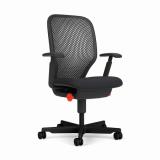
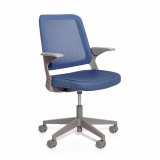
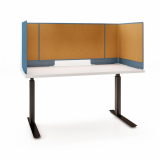



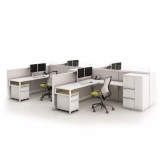


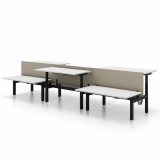

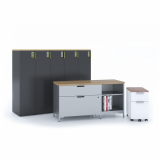
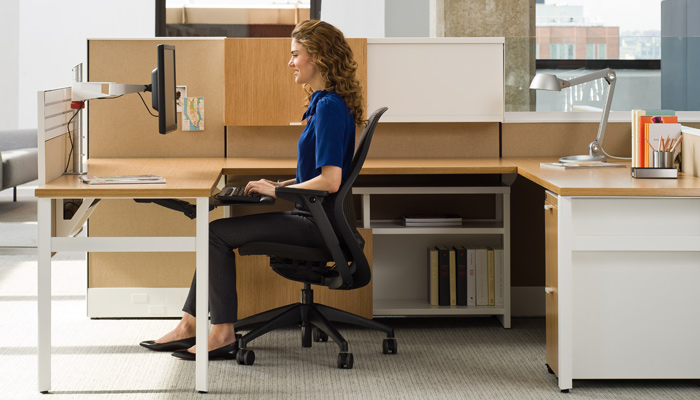
.jpg)
